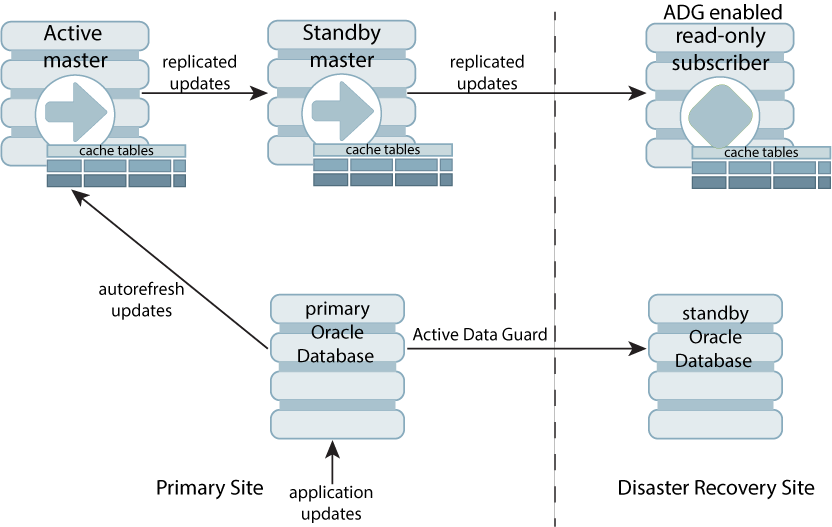Cache in TimesTen Works with Asynchronous Active Data Guard
You can cache tables from an Oracle Active Data Guard with the asynchronous redo transport mode into read-only cache groups.
When using cache with Active Data Guard, you can only use read-only cache groups that are replicated within an active standby pair replication scheme.
The Active Data Guard configuration includes a primary Oracle database that communicates over an asynchronous transport to a single physical standby Oracle database. As shown in Figure 10-1, the primary Oracle database is located on the primary site, while the standby Oracle database is located on a disaster recovery site.
Figure 10-1 Recommended Configuration for Asynchronous Active Data Guard

Description of "Figure 10-1 Recommended Configuration for Asynchronous Active Data Guard"
On TimesTen, the read-only cache groups on the primary site are autorefreshed from the primary Oracle database; however, the only transactions that are autorefreshed are those whose changes have been successfully replicated to the standby Oracle database. Once refreshed to the active master, all changes are then propagated to the TimesTen standby master and a read-only subscriber using standard TimesTen replication processes.
For the best failover and recovery action, you should locate the read-only subscriber
on the same disaster recovery site as the standby
Oracle database. Create this read-only subscriber
with the ttRepAdmin -duplicate
-activeDataGuard utility option, which
replicates the read-only cache groups directly to
the subscriber as it would to a standby master
database. That is, instead of the cache groups being
converted to tables when replicated to a subscriber,
the cache groups themselves are replicated to the
read-only subscriber. This is to provide a recovery
and failover option if the primary site fails. See
Recovery After Failure When Using Asynchronous Active Data Guard.
The following sections provide more details on the environment for asynchronous Active Data Guard when using replicated read-only cache groups: